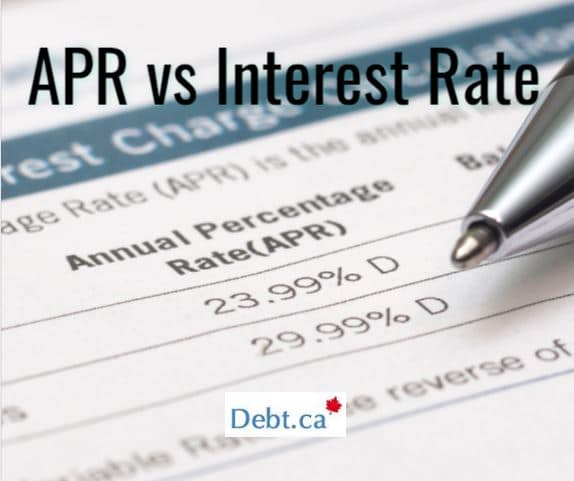Today you can get a 5-year fixed-rate mortgage for under 3 percent and a secured line of credit for as little as 3 percent, so why are credit card interest rates still so outrageous? With a typical interest rate of 18 percent, credit cards are one of the most expensive forms of debt next to payday loans. Strive to avoid carrying a balance at all costs. Carrying a balance can take you years to pay off and cost you thousands in interest. Although credit cards are a form of consumer financing, there is little relation between your credit card’s sky-high interest rate and the prime rate.
The Overnight Lending Rate and Credit Card Interest Rates
There is little relation between the overnight lending rate and credit card interest rates. The overnight lending rate set by the Bank of Canada represents less than one percent of bank funding, says the Canadian Bankers Association (CBA). In fact, the CBA says it in no way influences the pricing of consumer lending or credit card interest rates.
What affects credit card interest rates?
If the Bank of Canada doesn’t influence credit card interest rates, who does? According to the CBA, there are several factors that influence credit card interest rates and fees, including:
Grace Period:
An interest-free period from purchase to payment, depending on the card, as long as the balance is paid in full when owing.
By paying off your balance each month, you’re receiving free short-term financing from your credit card issuer. For those who don’t pay their balance, issuers recover some of the costs through high-interest rates.
No Collateral:
Access to unsecured credit where no collateral is needed makes it a higher risk for the credit card issuer.
The interest rate on a consumer product has a lot to do with the risk to lenders. Mortgages come with such low-interest rates because they have a home as collateral. With credit cards, there is no security, so the risks of default are a lot higher.
Processing Costs:
There are significant costs to operating the credit card system, including processing a large volume of transactions, the technology that is constantly updated to support transactions, preparing and mailing statements, collecting payments, and the costs for providing value-added rewards programs.
Although purchasing with your credit card is free in most cases (unless you pay an annual fee), retailers foot some of the bills. Retailers are charged a transaction fee for every purchase. With new security advances like Chip-and-PIN technology, again, it’s the cardholders who don’t repay their balance in full that help share the cost.
Fraud Prevention:
Costs to fight fraud and customer reimbursement. When fraud occurs, customers have zero liability. In 2013, financial institutions reimbursed more than $465 million to their Canadian credit card customers.
Despite security advances, fraud is a growing problem with credit card issuers. In 2013, over 693,000 accounts were the victim of credit card fraud. Although you’re most likely covered by zero-liability protection, it’s the delinquent cardholders that help pay some of the losses.
With a better understanding of interest rates, you can avoid incurring high fees.
Credit card interest rates significantly impact a cardholder’s financial well-being, making it essential to understand the factors that affect them. Factors such as the Bank of Canada’s policies, credit scores, and market conditions all play a role in determining credit card interest rates in Canada. By being aware of these factors and implementing effective credit card management strategies, Canadians can make informed financial decisions and use credit cards responsibly. If your interest rates are keeping you from paying down your credit card debt reach out to a credit counselor who may be able to help you find debt relief.









